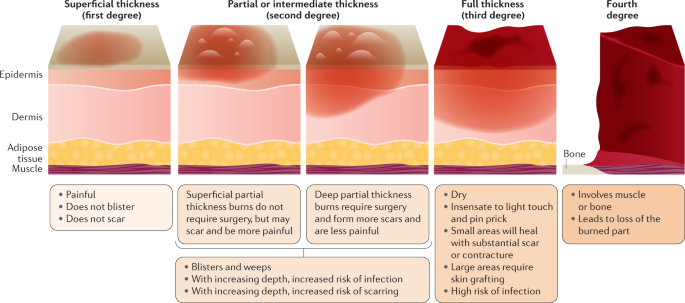A nurse is assessing a patient with hypokalemia, she notes that the patient's handgrip strength has diminished since the previous assessment 1 hour ago. What action does the nurse take first?
Assess the patient’s respiratory rate, rhythm, depth
Call the healthcare provider
Document findings and monitor the patient
Measure the patient’s pulse and blood pressure
The Correct Answer is A
A. Assess the patient’s respiratory rate, rhythm, depth:
This is the correct action to take first. Hypokalemia can lead to respiratory muscle weakness, which can result in respiratory compromise or failure. Assessing the patient's respiratory rate, rhythm, and depth will help determine if there are any signs of respiratory distress or impending respiratory failure.
B. Call the healthcare provider:
While it's important to involve the healthcare provider, especially if there is a significant change in the patient's condition, assessing the patient's immediate respiratory status takes priority to ensure prompt intervention if respiratory distress is present.
C. Document findings and monitor the patient:
Documenting findings and ongoing monitoring are essential steps, but they come after addressing the patient's immediate needs, such as assessing respiratory status in this case.
D. Measure the patient’s pulse and blood pressure:
While vital signs are important, they may not immediately address the potential respiratory compromise associated with hypokalemia-induced muscle weakness. Assessing respiratory status is more directly relevant to the observed change in handgrip strength.
Nursing Test Bank
Naxlex Comprehensive Predictor Exams
Related Questions
Correct Answer is D
Explanation
A. Excessive scarring:
Excessive scarring is not an example of a first-degree burn. It typically occurs in more severe burns that affect deeper layers of the skin, such as second-degree or third-degree burns. Second-degree burns extend into the dermis, while third-degree burns damage all layers of the skin and can lead to significant scarring. First-degree burns, on the other hand, only affect the outer layer of the skin (epidermis) and usually do not result in excessive scarring.
B. Blistering from flames:
Blistering from flames is more characteristic of a second-degree burn rather than a first-degree burn. Second-degree burns involve damage to both the epidermis and part of the dermis, which can result in blister formation. These burns are often caused by direct contact with flames, hot liquids, or steam.
C. Blackened dead skin:
Blackened dead skin is indicative of a third-degree burn, which is the most severe type of burn. Third-degree burns damage all layers of the skin, including the epidermis, dermis, and sometimes underlying tissues. The skin may appear charred or blackened, and these burns often require medical intervention, such as skin grafting, due to the extent of tissue damage.
D. A sunburn:
A sunburn is an example of a first-degree burn. It occurs due to overexposure to ultraviolet (UV) radiation from the sun, leading to redness, pain, and mild swelling of the skin. First-degree burns affect only the outer layer of the skin (epidermis) and typically heal within a few days without significant scarring or blistering. Applying soothing lotions, staying hydrated, and avoiding further sun exposure can help manage sunburns.

Correct Answer is C
Explanation
A. “Call your surgeon if you have any questions at home.”
This instruction is important as it encourages the patient to seek help and clarification if they have any concerns or questions about their postoperative care at home. However, while communication with the surgeon is essential, it is not as immediately critical as ensuring proper hand hygiene when dealing with wound care and drain management.
B. ”Eat a diet high in protein, iron, zinc, and vitamin C.”
Nutritional advice is crucial for postoperative recovery, as a balanced diet high in protein, iron, zinc, and vitamin C can promote wound healing and overall recovery. However, while important for long-term recovery and healing, dietary recommendations do not directly address the immediate risk of infection or complications associated with wound care and drain management.
C. “Wash your hands before touching the drain or dressing."
This instruction is the most important in this context because proper hand hygiene is crucial for preventing infections during wound care and drain management. Clean hands significantly reduce the risk of introducing harmful bacteria or contaminants to the surgical site, which can lead to infections and other complications. Ensuring that the patient washes their hands before touching the drain or dressing is a fundamental measure for promoting wound healing and preventing postoperative complications.
D. “Be sure you keep all your postoperative appointments.”
Keeping postoperative appointments is important for ongoing assessment, monitoring, and follow-up care. However, while essential for overall recovery and management of postoperative issues, it is not as immediate or directly related to the patient's ability to manage their dressing and drain at home.
Whether you are a student looking to ace your exams or a practicing nurse seeking to enhance your expertise , our nursing education contents will empower you with the confidence and competence to make a difference in the lives of patients and become a respected leader in the healthcare field.
Visit Naxlex, invest in your future and unlock endless possibilities with our unparalleled nursing education contents today
Report Wrong Answer on the Current Question
Do you disagree with the answer? If yes, what is your expected answer? Explain.
Kindly be descriptive with the issue you are facing.
